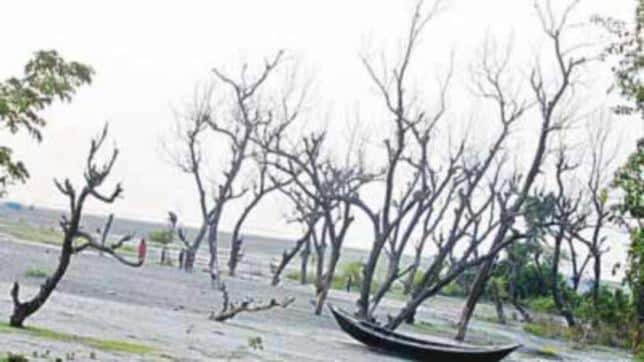Water Management Policies in Bangladesh
The policies set forth herein are considered essential for addressing the objectives of improved water resources management and protection of the environment. Every public agency, every community, village and each individual has an important role to play in ensuring that the water and associated natural resources of Bangladesh are used judiciously ,so that the future generations can be assured of at least the same, if not better, availability and quality of those resources.
As water is essential for human survival, socio-economic development of the country and preservation of its natural environment, it is the policy of the Government of Bangladesh that all necessary means and measures will be taken to manage the water resources of the country in a comprehensive, integrated and equitable manner. The policies enunciated herein are designed to ensure continued progress towards fulfilling the national goals of economic development, poverty alleviation, food security, public health and safety, decent standard of living for the people and protection of the natural environment.
The National Water Policy will guide management of the country's water resources by all the concerned ministries, agencies, departments, and local bodies that are assigned responsibilities for the development, maintenance, and delivery of water and water related services as well as the private users and developers of water resources.
Water Management Policies in Bangladesh:
Key Policies in Bangladesh :
After the two consecutive devastating floods in 1954 and 1955, the Krug Mission of United Nations recommended a 20-year Water Master Plan. Following the recommendation, the International Engineering Company (IECO) of the USA prepared the master plan in 1964 . The objective of the plan was to increase agricultural production through surface-water based engineering solutions such as construction of massive flood control structures and drainage improvement to be followed by irrigation facilities. A major deviation from surface-water based large scale flood control projects was found in 1972, when the International Bank for Reconstruction and Development (IBRD) recommended small scale water projects, proposing the use of low lift pumps and tube-wells for surface and groundwater withdrawals, respectively. This measure significantly contributed to journey towards food self-sufficiency in Bangladesh.
Subsequently, the Government of Bangladesh recognized the need for institutional reforms and for a new Master Plan. In preparation for the National Water Plan (NWP) Phase-I, a Master Plan Organization (MPO) was created in 1983, though the NWP itself was not completed until 1986, as the development of the plan was a lengthy process requiring the collection of large quantities of baseline information. An assessment was made in the plan document on the availability of water from various sources and the plan also projected the future demand for water by different sectors.
Bangladesh experienced two consecutive severe floods in 1987 and 1988 which brought the issue of flood control and flood management on the agenda of international forums. In December 1989, the Flood Action Plan (FAP) was endorsed by the representatives of the Government of Bangladesh with the aim of stabilizing food production and maintaining the country’s capacity to feed an expanding population. At the second conference on the FAP in 1992, the Flood Plan Coordination Organization produced a set of guidelines for better participation in management projects. These Guidelines represented an important milestone, because people’s entitlement to participate was officially recognized for the first time.
In 1991, National Water Plan (NWP) Phase-II was completed by the MPO which included the development of a number of planning models and analytical tools for defining and evaluating strategies. During this phase, the country was divided into 173 catchments which were grouped into 60 planning areas, and further aggregated into five major hydrological regions. At the end of FAP in 1995, the Bangladesh Water and Flood Management Strategy was produced, and was the first long-term strategy for the water sector in Bangladesh. It envisaged both the formulation of a National Water Policy (NWPo) and the preparation of a National Water Management Plan (NWMP) which would include national, regional and basic programmes for water management.
The adoption of the National Water Policy (NWPo) at the end of 1999 was a milestone towards institutionalization of IWRM in Bangladesh. Major institutional reforms and the roles of the government, the private sector and civil society in the management of water resources were clearly defined in the NWPo. The NWPo also played an important role in accelerating the development ofsustainable public and private water delivery systems, with appropriate legal and financial measures and incentives including formulation of water rights and water pricing.
Based on an Integrated Coastal Zone Management approach, the Ministry of Water Resources (MoWR) formulated the Coastal Zone Policy in 2005 . The Bangladesh Climate Change Strategy and Action Plan (BCCSAP) integrated climate change issues in planning and designing processes to support economic growth and poverty reduction . The Ministry of Environment and Forests (MoEF) has also prepared the National Adaptation Programme of Action (NAPA) for Bangladesh. The NAPA provides guidance on the coordination and implementation of adaptation initiatives in the country through building synergies with other water and environmental programmes .
